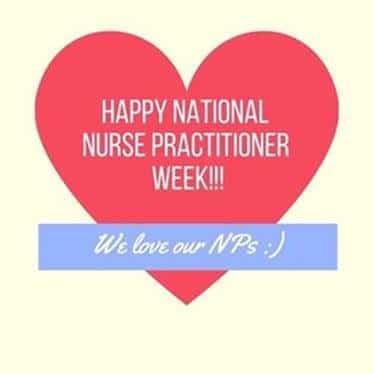Nurse Practitioner Week takes place annually in the second week of November to recognize these incredible healthcare providers and raise awareness of the powerful role they play in ensuring general health and well-being. Can you believe that the nurse practitioner profession has been in existence for 56 years now? Nurse practitioners are highly educated and trained medical professionals who are almost like doctors. In addition to their fundamental roles as registered nurses, they can provide primary care, counseling, diagnosis, offer health education, and write prescriptions.
HISTORY OF NURSE PRACTITIONER WEEK
The nurse practitioner profession started in 1965 to respond to the increasing demand for primary care providers in the United States. The government recently expanded Medicare and Medicaid to cover disadvantaged people, leading to a mismatch in the number of available physicians and the large population of people now qualified for primary care.
The first nurse practitioner program (NP) was launched at the University of Colorado in 1965 by NP pioneers Loretta Ford, EdD, PNP, FAAN, and Henry Silver, MD. It started as a certificate program, but in the early 1970s, the university upgraded it to a full master’s degree program.
In the 1970s, the NP program, primarily focused on pediatrics, was expanded to other areas, including family NP programs and adult NP programs. By 1973, the NP programs had grown to 65. The following year, the American Nurses Association (ANA) established the Council of Primary Care Nurse Practitioners to legitimize the role of Nurse Practitioners. By 1977, the ANA was offering NP certification exams. Before the end of the decade, the number of NPs had increased to 15,000.
In 1985, the American Academy of Nurse Practitioners (AANP) was founded and gained 100 members at the end of its first year. The government began investing in the Nurse Practitioner profession, with $100 million spent on NP education by 1987.
Despite its acceptance by the government, nurse practitioners were not legally recognized as providers, which restricted them from accessing reimbursement. The NP leaders began working with various stakeholders to ensure NPs were eligible for reimbursement. That led to the Omnibus Reconciliation Act being passed by Congress in 1989 and the Balanced Budget Act of 1997.
Although nurse practitioners are legally allowed to practice in all 50 states, some restrictions are still placed on their range of practice, even today. Such rules led to the AANP creating National Nurse Practitioner Week in 2004 to celebrate the importance of nurse practitioners and get lawmakers to remove the barriers to practice.

